- 当前位置:
- 首页>
- 活动>
- ������������
������������
CCG持续关注国际关系议题,推动中国与全球化的发展,积极开展国际交流,充分发挥智库“二轨外交”作用,在巴黎和平论坛、达沃斯世界经济论坛、慕尼黑安全会议等重要国际政策与意见交流平台上组织分论坛、边会、圆桌会议、晚宴等活动,促进国际政商学界对话,凝聚共识;CCG积极与各国政界、智库界、工商界开展“二轨外交”活动,每年常态化赴多国调研与交流,促进中外关系攸关方互动,保持与多国政策圈层的沟通渠道。
-
何亚非:浙商发展要站在国家战略高度
专家简介何亚非,全球化智库(CCG)联席主席,中国外交部原副部长。 中新网杭州10月11日电(胡亦心)敢闯敢拼的浙商,是浙江改革的见证者和推动者,全球化格局下,浙商要如何拓展国际新格局,迎接新挑战?10月10日,外交部原副部长、国务院侨务办公室原副主任、中国与全球智库(CCG)联席主席、人大全球治理中心主任何亚非在“东方启动点——浙商四十年改革开放研讨会”上,以全球视野观察浙商发展的过去与未来,并建议浙商要站在国家发展战略的高度思考,有全球的视野和世界的胸怀,解放思想、敢为人先,一步一个脚印的稳扎稳打。 中新网杭州10月11日电(胡亦心)敢闯敢拼的浙商,是浙江改革的见证者和推动者,全球化格局下,浙商要如何拓展国际新格局,迎接新挑战?10月10日,外交部原副部长、国务院侨务办公室原副主任、中国与全球智库(CCG)联席主席、人大全球治理中心主任何亚非在“东方启动点——浙商四十年改革开放研讨会”上,以全球视野观察浙商发展的过去与未来,并建议浙商要站在国家发展战略的高度思考,有全球的视野和世界的胸怀,解放思想、敢为人先,一步一个脚印的稳扎稳打。 何亚非说,浙商所代表的民营经济,是中国经济的主要发动机之一,与国有企业一样,缺一不可。浙商过去的成功,首先在于他们立足浙江、拓展国内、面向世界;第二在于务实、稳健,敢于试水、勇于创新。“他们是一个创新和稳健的结合体,这就是我们浙江人的一个特点”。 面对全球化的浪潮,何亚非说,全球化的发展,就意味着世界市场的形成,全球生产链的形成,这也给中国提供了一个融入世界经济发展的绝佳机会,中国和浙商都是全球化的受益者。 关于中美贸易战,何亚非认为,是美方强加给中国的,恐怕难以避免,中国不惹事,但绝不怕事。“中国有句古话,‘兵来将挡、水来土掩’。美方应该端正态度,真正坐下来谈判。” 何亚非强调,全球化是不会走回头路的,也走不了回头路,因为利益共同体已经形成,全球的市场不会再分裂,全球供应链也不会被切割,“面对挑战,浙商应该冷静的思考,要怎么做才能把我们的资金、生产链拓展到世界各地”。 “美国最有力量的是他的跨国公司,这是美国的实力所在。”何亚非说,浙商要成为中国国力增强的代表性人物,把国家放在心里,做成在世界上有名气、有力量、可信赖,能够提供优秀产品的国际性企业、跨国性企业,这应该成为我们的目标。 何亚非表示,浙商在考虑自身企业发展的同时,必须把中国的长远利益和国际社会利益紧紧的结合起来,要把中国的发展战略与“一带一路”其他国家的发展战略对接起来,“这‘对接’两个字很重要”。 对此,何亚非建议,浙商要认真学习和掌握习近平总书记关于中国发展和国际合作的新思想、新理念,从理论和实践两个层面,找到自身在国际上的发展路径。“我觉得《新闻联播》还得看,浙商要了解国家在想什么,国际上发生了什么事,特别是中央在思考什么问题,学习是必不可少的。” 对于今后浙商的发展,何亚非建议,浙商需要有儒商的气质和本领,在走出去碰到文化冲突时,能相互学习,实现文明的融合;在企业自身文化建设方面,除了呼吁中华民族的传统美德,也需要有国际化、多元化、包容性的特点;此外还要重视培养拥有国际视野、复合型、跨文化的人才,建立人才储备。 “教育、培训、研发是紧密的联系在一起的,跟人才有关,跟下一步的科技创新有关,这些方面的开支本质上是不能节约的。”何亚非说,这直接关系到你能不能可持续发展,能不能在你所在的领域异军突起。 在世界各地扎根的浙江籍华人华侨数量庞大,何亚非说,要把他们当做我们重要的战略资源,充分发挥他们的桥梁作用,智库的作用,我们不管走到哪里,不管在哪个领域发展,华人华侨都是我们可以依靠的对象。 何亚非建议,要用“百年老店”的思维打造企业,“你要做百年老店,一定有你的优势,别人不可替代的优势,有不断创新的能力,保持活力,而不是盲目的做大”。 何亚非说,浙江是中国改革开放的试验田,我希望浙江企业家不妨在改革开放40周年这个时刻,做些冷静的思考,思考未来,总结过去,以便更好的走向未来。文章选自中国新闻网,2018年10月11日
2018年10月16日 -
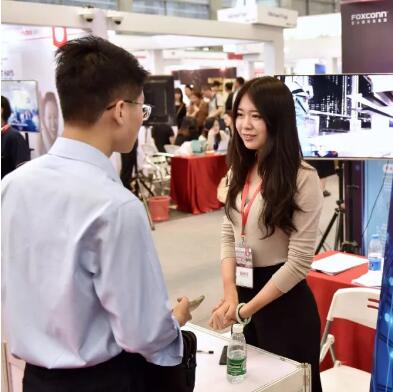
新华社《半月谈》| 海归潮中高精尖人才仍偏少,中国“人才逆差”何时变为“人才顺差”?
2018年4月14日,求职人员(左)在第十六届中国国际人才交流大会设立的海归人才招聘会上与招聘人员交流 毛思倩摄人才是中国崛起、建立创新型国家的关键。中国要建立全球人才高地,就要吸引更多的海外人才,跳出14亿这个范围,从全球70亿人口中寻求所需人才。然而,目前中国的国际人才所占比例很低。不仅如此,中国的人才外流现象严重,每年都有大量留学生滞留海外。尽管近年来出现了“海归归国潮”,但很多高精尖人才仍未归国。根据全球化智库(CCG)近期发布的《中国留学发展报告》数据,尽管近年来留学归国人数与出国留学人数的差距在逐渐缩小,但整体上中国仍处于人才外流状态,人才赤字明显,在海外取得博士学位者归来比例并不高。大部分学历越高,越有国际竞争力,越是世界各国需要的人才,回来的可能性就越小。另外,颇有代表性的美国社区调查的数据显示:中国大陆出生的具有博士学位的在美人数为12.4万,占全美博士学位移民的16.4%,比印度高出0.3倍,比墨西哥高出近9倍。美国科学基金会针对美国科技工作者的调查则显示:2010年,美国的理工科博士毕业生中,出生在美国之外的有39.5万人,其中23%来自中国,高出名列第二位的印度10个百分点。习近平总书记在党的十九大报告中指出,“人才是实现民族振兴、赢得国际竞争主动的战略资源”。中国需要国际人才,国际人才也需要中国舞台。为此,中国应加快调整人才政策,吸引更多国际人才来华,吸引更多留学人员和海外华人归国,促进中国现代化建设。 美国是最大赢家,中国起步晚 随着全球化的深入,市场经济在全球范围内已经确立,新的科技革命给各国带来了深刻影响,全球价值链影响加剧,分工协作日益细化,跨国公司的国际产业转移速度加快,“人才争夺战”在全世界范围内打响。官方与民间、政府与企业皆不能置身其外,各大行业无一幸免。世界上很多国家都建立或发起了专门以寻求国际人才的机构或行动,如“联系新加坡”“德国学者组织”“海外印度人事务部”“美国回形针计划”等。美国、德国、新加坡、印度、日本、韩国等国家在寻求人才方面做得格外突出,反过来也直接支持了这些国家经济的快速发展。美国是全球人才竞争最大的赢家,可以说是国际人才争夺的最佳“猎手”。特朗普上台以来,美国在投资移民等移民方式上收缩,但对杰出人才移民EB-1(第一类优先职业移民)则给予了极大的便利。2018年,美国共发放4万张EB-1签证,其中包括EB-1A“杰出人士”移民、EB-1B“杰出教授或研究员”移民、EB-1C“跨国公司经理”移民三个类别。以EB-1A为例,其签证基本不受排期影响,额度供需上基本处于充裕状态;审批速度也很快,15天左右申请可获批,一年之内可获得移民签证。美国正是“不拘一格”瞄准了世界各地的人才,不仅是本族裔人才,而且吸引了大量海外人才。其对人才、移民的法律化、制度化管理,也是吸引海外人才的重要因素。中国作为国际人才争夺战的后来者,相对于其他国家起步晚,但是发展迅速。自2000年以来,一些中央直属企业的高管职位开始尝试面向海内外公开招聘。尤其是中国的一线城市,聚集了大量的各领域专业型人才。2016年1月,公安部出台支持北京创新发展的20项出入境政策措施,实现了国际人才引进政策方面的多项重大突破。其中包括以年薪等市场化条件作为中国绿卡准入标准、对海外华人永久居留提供便利;海外博士人才可以直接申请绿卡;放宽来华留学生和外籍学生在华实习就业创业许可等。2016年6月,中国加入国际移民组织(IOM),成为其第165个成员国;2018年4月,成立国家移民管理局。这些都是中国为吸引海外人才采取的重大措施。 国际人才争夺战“拐点”来临 未来几年,中国将有望迎来国际人才争夺战的“拐点”,吸引大量人才来华,使“人才净流出”转化为“人才净流入”,变“人才逆差”为“人才顺差”,直至形成国际性人才的“良性环流”。在国际人才争夺战中,中国有巨大的优势:中国经济发展迅速,近年来成为世界第二大经济体、全球最大市场之一,是世界上最具发展潜力的国家之一。随着人口红利逐渐递减,国内各地区都在争夺人才红利,中国人才的缺口越来越大,对人才的重视程度越来越高。国内的就业创业环境不断改善,“放管服”改革、“大众创业、万众创新”等,都为国内人才和海外人才提供了良好的机会。2017年10月,汇丰银行发布“全球移居人士年度调查”显示,中国内地作为移居目的地,职业发展机会排名位列全球第二,仅次于美国。很多受访外籍人才表示,移居中国内地后的职业前景更广阔,有更多机会获得新技能,可支配收入也增加了。而且,国际人才来华还出现了一个新趋势,即从一线城市逐渐向二线城市和西部地区转移。这说明中国的二三线城市和西部地区对国际人才有了更强的吸引力。根据全球化智库(CCG)发布的《2017中国海归就业创业调查报告》,党的十八大以来,中国形成新中国成立以来最大规模留学人才“归国潮”,高层次留学人员正逐渐成为践行创新驱动发展战略的领跑者和生力军。2016年,中国出国留学人员总数为54.45万人,留学回国人数达到43.25万人。中国在国际人才争夺战中取得了重要成绩,但也有一定不足。第一,目前仍有大量高精尖人才滞留海外。第二,有的地方政府“运动式”引进人才,一定程度上出现了形式主义,造成资源浪费,且政府出面引才易被他国误解,存在一定的政治风险。第三,吸引人才的“灵活性”不够,执行上往往“一刀切”。比如,引进人才有55岁的年龄限制,55岁以上的资深海外人才就可能被屏蔽在外。此外,高额的个人所得税也是阻碍引进国际人才的一大因素,相比韩国36%,日本37%,新加坡22%的最高税率,中国45%的最高税率远高于周边地区。 学习各国吸引人才政策的经验 人才战争的成败,最终决定一个国家在全球化背景下走向世界的命运。因此,在国际人才争夺战即将出现“拐点”的今天,中国应提前做好准备,打好这场攻坚战。中国应学习各国吸引人才政策的经验,以制度化、机制化、法律化、市场化的手段来“聚天下英才为我所用”。在机制上,改善吸引海外人才的方式。首先,人才引进前期工作还需更高层面的统筹。目前的“千人计划”由海外高层次人才引进工作小组组织领导、统筹协调,并由中央组织部、人社部与教育部等多个部门组成。而吸引国际高层次人才需要专业的部门在全球搜索、关注、接触、挖取人才,解决其后顾之忧,并对人才来华后的服务工作等方面进行专业化操作,这就要建立更高一级的机构来进行高度统筹。其次,在具体引才方面,应通过“人才猎头”这一国际通用的方式引进海外人才。中国应建立一大批猎头公司、劳务公司和人才公司,直接与相关人才联系,这样不仅可以得到国际上的认可,还能更加精准地吸引人才,创造良好的“人才引进生态环境”。再次,应对高层次、资深的国际人才进一步放开门槛、细化规则,增加弹性和人性化设计。20世纪八九十年代出国的大批优秀高精尖留学人员,有些已超过55岁,也是我们需要争取的对象。为此,可以出台“资深人才计划”等方式,吸引55岁以上的资深海外人才来华。在制度层面,完善吸引国际人才的各项法律法规。相对于美国的优势,中国可以出台、制定移民法,完善移民法律制度体系建设,使中国在人才引进、人才移民与人才管理的法律框架更加科学和系统,在具体操作上有法可依。中国应发挥国家的竞争优势,目前国家外国专家局和科技部的重新组建、国家移民管理局的成立,为吸引海外人才来华提供了制度上的支持。此外,中国还应放宽“中国绿卡”的受惠面,放宽永久居留申请条件,进一步扩大在华永久居留申请范围,降低保持在华永久居留资格的最低时限要求,开通海外直接申请“绿卡”的渠道。中国可以仿照印度的“印裔卡”,加快推出“华裔卡”,吸引更多海外华人华侨来华。近期推出的港澳台居住证取得了良好反响,为海外华人的“华裔卡”的推出提供了可能性和先例。在市场化层面,加强海外人才的服务工作。吸引人才,最重要的是要留住人才。充裕的研究经费、有国际竞争力的收入和权益、充分的研究自由等都是发挥人才作用、留住人才的关键。引入国际人才只是开始,而把国际高层次人才留在中国才是打赢国家间人才争夺战的关键。全球化时代,国际人才属于“全球定价”,特殊人才需要特殊待遇。因此,要采取灵活的薪金制度,以聘任制进行专才专用,对于国家紧缺的人才可考虑薪金高出国际同行水平。在人才引进之后,要兑现引进人才的承诺,以公平公正的方式让其能够得到应有的研究经费进行研究。同时,降低个人所得税率,进一步完善解决海外人才后顾之忧的机制,帮助海外人才解决办理绿卡和社保、住房、子女上学等问题,解决包括归国海外华人在内的海外专家在国内的退休待遇问题,建立外籍人才社会保险机制等。中国应加强与国际各类人才机构的合作,包括国际猎头协会、国际移民组织、世界大都市协会等,以及与各国的人才组织加强合作。未来,可以发起创立国际人才组织联合会,与各国加强沟通、交流人才政策,分享引才经验,促进国际人才的“环流”。在21世纪的国际人才争夺战中,与欧美等发达国家相比,中国虽处于相对弱势的地位,但潜力巨大。人才是21世纪国际竞争的主要力量,未来的中国更迫切需要人才,尤其是高精尖人才。因此,中国要进一步扩大开放,积极参与国际人才争夺战。(作者系全球化智库理事长、西南财经大学发展研究院院长)文章选自半月谈,2018年10月15日
2018年10月16日 -
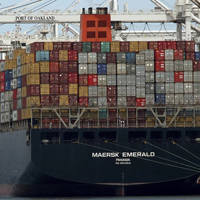
【South China Morning Post】Beijing ‘looking into joining TPP’ to hedge against US
Beijing ‘looking into joining trans-Pacific trade pact’ to hedge against USOfficials are exploring the possibility of China becoming a member of the CPTPP, source close to the government saysBeijing is looking into joining a trans-Pacific trade deal that it was previously shut out of by the US amid mounting pressure from the trade war, according to a source close to the Chinese government.China could hedge against US President Donald Trump’s protectionist “America first” strategy and boost its role in free trade by joining the 11-nation Comprehensive and Progressive Agreement for Trans-Pacific Partnership (CPTPP), observers said.So far China has not publicly expressed any interest in joining the pact and it did not apply for membership of the previous TPP deal – which Trump has pulled the US out of – calling it too complex.But attitudes towards the CPTPP have been quietly shifting in Beijing, with Chinese officials over the past few months exploring the possibility of, and seeking advice on, joining the deal, according to the source, speaking on condition of anonymity.Observers said joining the wide-ranging agreement between 11 nations – including Japan, Vietnam, Malaysia, Canada, Mexico and Australia – would allow Beijing to expand its trade links and unlock growth potential at a time when China risks being economically isolated by the US.In a move that could unsettle policymakers in Beijing, a new trilateral trade agreement reached last week between the US, Canada and Mexico, subject to ratification, has a clause that gives Washington a near-veto over any attempt by Canada or Mexico to reach a free-trade deal with a “non-market economy”, which observers say targets China.“The biggest worry is the possible new alliance between the US and its allies forming new trade barriers to exclude China from market access,” said Wang Huiyao, director of the Centre for China and Globalisation(CCG), a think tank in Beijing.He said joining the CPTPP could send “a strong message” to the world about China’s progress on opening up and reform.“Joining the CPTPP could become a tool to hedge against the US and help China establish a new trade circle in addition to the ‘Belt and Road Initiative’ and Shanghai Cooperation Organisation,” Wang said. “We can’t just stay away from the other [trade] circles.”China viewed the original TPP with suspicion when it was first drafted in 2015. At that time, the US under the administration of Barack Obama was spearheading efforts to finalise the deal, which was seen as an attempt to reduce signatories’ dependence on Chinese trade and bring them closer to the United States.Beijing expressed dismay at being excluded from the pact, which had stronger environmental and labour standards than the CPTPP, saying all trade deals should be transparent and inclusive.But the agreement was left in limbo after Trump pulled the US out of the deal, calling it a “potential disaster”. Japan has since taken the lead in saving the agreement, which, despite some watering down of key provisions, is still believed to be a “gold standard” multilateral trade agreement that covers labour, intellectual property protection and the environment, and cuts more tariffs on goods.Japan and the remaining 10 countries finalised a revised version of the pact in March and renamed it the CPTPP.Talk of Beijing joining the trade deal comes as China and Japan have been seeking to mend fences, with Japanese Prime Minister Shinzo Abe due to visit Beijing this month. Economic cooperation is believed to be high on his agenda, though it is unclear whether Abe plans to raise the idea of China joining the CPTPP when he meets Chinese President Xi Jinping.Abe has invited Britain to join the agreement, and countries like Thailand, South Korea and the Philippines have also expressed interest. Trump said in April that the US would reconsider the deal if it were “substantially better”.Meanwhile, President Sebastian Pinera of Chile, a CPTPP member, told Bloomberg TV late last month that China could join the deal.“They might, of course; they have demonstrated their interests [in the TPP-11],” Pinera said when asked if he had spoken with the Chinese side about the joining.China is currently in talks for free-trade agreements with 27 countries. It is also involved in multilateral trade negotiations such as a China-Japan-South Korea deal and the Regional Comprehensive Economic Partnership (RCEP) between 16 nations that is expected to be signed before the end of this year.Tu Xinquan, a professor at the University of International Business and Economics in Beijing, said joining the CPTPP on top of that deal could be a smart move, and the sooner it happened the better.“The CPTPP is stronger on free trade, and [joining] could expand China’s allies and show the outside world that it is serious about speeding up reform and opening up – and that could also boost other countries’ confidence in China,” Tu said.He added that without Washington involved in the deal, Beijing could be in a better position to negotiate the terms, including on investment and intellectual property protection.But Chen Long, an economist with Gavekal Dragonomics, said it would not be easy for China to join the CPTPP.“The possibility of formal talks on China’s accession is still unclear given the US influence on the CPTPP members,” Chen said. “China may face tough negotiations over aligning its industrial and intellectual property policies with the agreement.”So far, Mexico, Japan and Singapore have already ratified the CPTPP, and Vietnamese Prime Minister Nguyen Xuan Phuc said last week that he expected his country to do so in November. The CPTPP would come into effect after six members have ratified the deal.From South China Morning Post, 2018-10-12
2018年10月15日 -
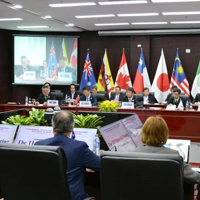
【参考消息】中国应警惕外资“被抢走”风险 扩大开放才更安全
参考消息网10月12日报道 香港《南华早报》网站10月11日刊文称,中国在贸易战中需警惕“可能被其他国家抢走外国投资”。 文章称,政府贸易顾问和观察人士说,在中美贸易战白热化之际,中国应警惕外国投资流向别处的风险,同时继续寻求与华盛顿谈判。 文章提到,美国副总统迈克·彭斯上周首次发表美国政府全面对华战略,令人们对双边关系的看法更加悲观,加剧了对这场冲突将进一步升级的担忧。 一位不愿透露姓名的贸易顾问说:“如果外国公司,尤其是跨国公司,认为贸易争端在短期内难以解决,或者认为惩罚性关税将持续很长时间,它们可能考虑调整产业链。” 文章称,根据官方数据,今年前8个月,中国实际利用外资金额865亿美元,同比增长6.1%。 这位贸易顾问说:“关键是要大力改善商业环境,确保公平竞争。” 文章指出,美国总统唐纳德·特朗普周二扬言要对从中国进口的价值2670亿美元的商品征收额外关税,此举将把惩罚性关税扩大到中国出口美国的所有商品。贸易谈判以僵局告终,美国对中国产品加征关税,中国则以对美国商品征税作为报复。 文章提到,尽管正式谈判被搁置,但消息人士对《南华早报》的记者说,一个美国商业代表团将在未来几天访问中国。 全球化智库(CCG )理事长王辉耀说,中美应该“避免战略误判”,并努力为重返谈判桌创造条件。 文章介绍,王辉耀最近在美国会晤了一些国会议员和顾问,他说,必须加强沟通,尤其是与对特朗普对华政策有影响的保守派智库的沟通。他说:“对话的时间窗口有限。” 王辉耀说:“扩大开放(对中国来说)要安全得多——越是开放,朋友越多。” 他说,这将向世界发出关于中国改革开放的“强烈信号”。文章选自参考消息网,2018年10月12日
2018年10月15日 -
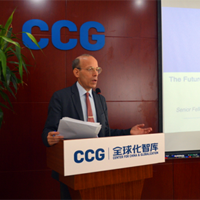
【China.org.cn】Hudson Institute researcher: No US-China Cold War yet
A senior researcher of American think tank Hudson Institute said in Beijing on Oct. 9 he doesn’t believe that China-U.S. relations will move toward a new state of Cold War.Richard Weitz, a senior fellow and director of the Center for Political-Military Analysis at the Hudson Institute, speaks at a meeting themed "The Future of U.S.-China Cooperation: Challenges and Prospects" at the headquarters of the Center for China and Globalization (CCG) in Beijing, Oct. 9, 2018. [Photo / China.org.cn]Richard Weitz, a senior fellow and director of the Center for Political-Military Analysis at the Hudson Institute, joined a roundtable discussion at the headquarters of the Center for China and Globalization (CCG) in Beijing and shared his opinions just after U.S. Vice President Mike Pence’s speech against China delivered at the Hudson Institute on Oct. 4 and the U.S. Secretary of State Mike Pompeo’s short visit to Beijing on Monday. Weitz said that Pence’s speech does not mean that China and the United States have entered a new Cold War, despite some analysts considering it similar to an "Iron Curtain" speech. His understanding is that the U.S. government still regards Russia as its biggest threat and that the China-U.S. trade dispute does not represent the beginning of an economic Cold War.With the United States’ imposition of massive tariffs on Chinese imports and threatening to impose more as well as making various accusations this year, the two countries’ relations have hit a rough patch. While U.S. President Donald Trump first initiated the trade war and recently accused China of meddling in the U.S. midterm elections at the UN Security Council, Pence also accused China of a series of so-called "wrong doings" in topics ranging from Taiwan, the South China Sea, political meddling, as well as trying to undermine Trump’s presidency. Under this background, Pompeo visited China to seek cooperation on the North Korea nuclear issue.Despite a wide range of differences between China and the United States, Weitz suggested that the commercial conflict of interest between the two countries is the main cause of China-U.S. disputes, so solving these conflicts of interest can lead to a breakthrough in solving the two sides’ economic and trade disputes.The researcher also pointed out that Pence’s speech did not mention any specific U.S. policy or measures to resolve the current China-U.S. disputes, so everything remains unknown and the two sides will need to continue dialogue and negotiations.He added, for the "trilateral relationship" among China, the U.S. and Russia, if the relationship between any two countries is out of balance, it will have a great impact on Sino-American relations. This year marks the 40th anniversary of the signing of the Joint Communique on the Establishment of Diplomatic Relations between China and the United States. It is also the 40th anniversary of China’s reform and opening up. Wang Huiyao, president of the CCG, stated in exchanges with Richard Weitz and other experts and researchers that after 40 years of development, China and the United States have shared many common interests, and at a time when China-U.S. trade relations are tense, the civil and cultural exchanges should be strengthened, especially for Chinese and American think tanks.From China.org.cn,2018-10-12
2018年10月15日 -
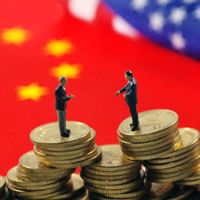
【China Daily】US urged to manage differences, cooperate
China has been integrated into the global economy, and it will not engage in "economic invasion". [Photo/IC]China hopes the United States will join efforts to explore appropriate ways to resolve differences and promote cooperation between the world’s two largest economies, the Ministry of Commerce said on Thursday.Analysts said that to resolve the current trade disputes, the two countries should shift their focus to making the economic pie bigger in order to benefit both, as the two economies are complementary.Gao Feng, a ministry spokesman, said at a news conference that the country is open to resuming negotiations with the US on bilateral investment and initiating talks on a free-trade agreement at a proper time. "But regrettably, the US has failed to demonstrate its sincerity."China and the US initiated talks in 2008 on a bilateral investment treaty, the signing of which will ease two-way investment procedures. The ongoing trade tensions have brought more uncertainty to its possibility of success.He reiterated that China has not, and will not, engage in "economic aggression". On the contrary, China hopes to share opportunities with all its economic and trade partners and grow together with them to boost world economic growth.Gao was responding to US Vice-President Mike Pence’s accusations toward China last week. In a speech, Pence said the administration would levy even more tariffs, with the possibility of more than doubling the current level, unless a "fair and reciprocal" deal is made.In response to Pence’s claim that much of China’s success was driven by US investment and trade imbalances, Gao said the country does not deny the contribution US investment has made to its economic growth, although it accounts for a small proportion of total foreign investment in China.Since 1987, China has seen $2 trillion in foreign investment, of which the US accounted for $81.4 billion, or 4.1 percent, according to the ministry.Wang Huiyao, president of the Center for China and Globalization, said Chinese and US policymakers should "make the economic pie bigger", build on the agreements already reached through bilateral negotiations and work to increase Sino-US bilateral trade and opportunities in services trade, Wang said. They should also seek further tariff reductions through bilateral negotiations and re-engage in the Bilateral Investment Treaty talks.Long Guoqiang, vice-president of the Development Research Center of the State Council, said the trade tensions will not change the two nations’ overall economic complementarity, as they are complementary in terms of industrial structures, technologies and resources. "Their economic and trade relations will rise to a higher level in both scale and substance in the coming 10 years."From China Daily,2018-10-12
2018年10月15日 -

【中国网】中国成为“一带一路”沿线国家留学生心中的“远方”
中国网10月11日讯 (记者 马超)中国经过改革开放40年的发展,取得了巨大的发展成就,在城市建设、社会管理等众多方面积累了现代化经验,在科技创新上取得诸多建树。蕴藏着无限机遇的中国社会犹如强大的磁场,吸引着来自世界的有志之士,特别是来自“一带一路”沿线的留学生们。根据教育部公布的数据,2017年共有48.92万名外国留学生在我国高等院校学习,其中“一带一路”沿线国家留学生31.72万人,占总人数的64.85%,增幅达11.58%,高于各国平均增速。全球化智库(CCG)副主任兼秘书长苗绿(图片为受访者提供)我国招收“一带一路”沿线国家的留学生有着怎样的考量?对于“一带一路”国家留学生而言,中国有着怎样的吸引力?随着改革开放的深入推进,今后将呈现怎样走势?围绕以上问题,中国网记者日前专访了中国与全球化智库(CCG)副主任兼秘书长苗绿。民心相通的纽带苗绿表示,中国招收“一带一路”沿线国家留学生有四方面的考量。首先,招收“一带一路”沿线国家的留学生是推进“一带一路”建设的重要组成部分。有助于充分发挥教育的基础性和先导性作用,通过开展教育互联互通合作、开展人才培养培训合作和共建丝路合作机制,推进“一带一路”教育共同繁荣,为共建“一带一路”提供人才支撑。其次,招收“一带一路”沿线国家留学生是统筹谋划出国留学和来华留学的一部分。有助于缩减我国的留学逆差,进而提升我国教育国际化水平。再次,招收“一带一路”沿线国家留学生有助于推动完善我国国际人才发展环境,充分利用国内国际各类人才。如建立更加便利的外国人出入境制度,创新创业服务体系等等。最后,招收“一带一路”沿线国家留学生也为汉语言文化传播及中国文化“走出去”提供了良好的发展机遇,来华留学生学成回国后将成为中国文化推广的大使,促进“一带一路”沿线国家与中国“民心相通”。中国成为许多留学生眼中的“远方”据《印度时报》1月7日报道称,中国现在已经成为继美国和英国之后,最受留学生青睐的国家。中国,一下成了许多留学生眼中的“诗和远方”。苗绿说,中国高校经过几十年的发展,在教育水平、基础设施方面都取得了长足进步,甚至在很多方面处于世界领先地位。此外,在国家和教育部政策的引领下,高校与各级政府部门也制定了一系列的支持政策和项目,包括成立“一带一路”高校联盟、签订“一带一路”教育行动国际合作备忘录、双边协议与学位互认、北京市外国留学生“一带一路”专项奖学金、甘肃丝绸之路专项奖学金、湖北省政府“一带一路”留学生奖学金等,进一步增加了对“一带一路”沿线国家留学生的吸引力。苗绿还认为,中国与这些国家开展的产能等合作将为当地创造更多就业机会,降低当地的失业率。“中国鼓励优秀的外国留学生在华就业创业的政策则有助于利用国际人才资源,服务我国的发展建设。”继续扩大开放的力度2017年1月6日,人力资源社会保障部、外交部和教育部联合发布了《关于允许优秀外籍高校毕业生在华就业有关事项的通知》。对于这项优惠政策,苗绿表示,这在高校外籍毕业生在华就业政策方面取得了突破性进展。同时,她建议政府建立“一带一路”沿线国家留学生在华实习就业新机制,借鉴北京、上海、广东等城市出入境改革的经验,先行先试实习就业市场化配置机制。展望今后在“一带一路”倡议下的来华留学工作,苗绿说:“今年是‘一带一路’倡议提出五周年。五年来,我们完成了总体布局的‘大写意’,下一步,要做深做细,向高质量转变。”她指出,随着“一带一路”倡议的推进和改革开放的深入,中国与“一带一路”沿线国家的交流会越来越密切,对于熟悉“一带一路”沿线国家国情同时又了解中国国情的人才需求也会越来越迫切。因此,未来一段时间,“一带一路”沿线国家来华留学生数预计将持续增长。同时,来华留学生的质量也将越来越高,学习的专业领域越来越广。文章选自中国网,2018年10月11日
2018年10月15日